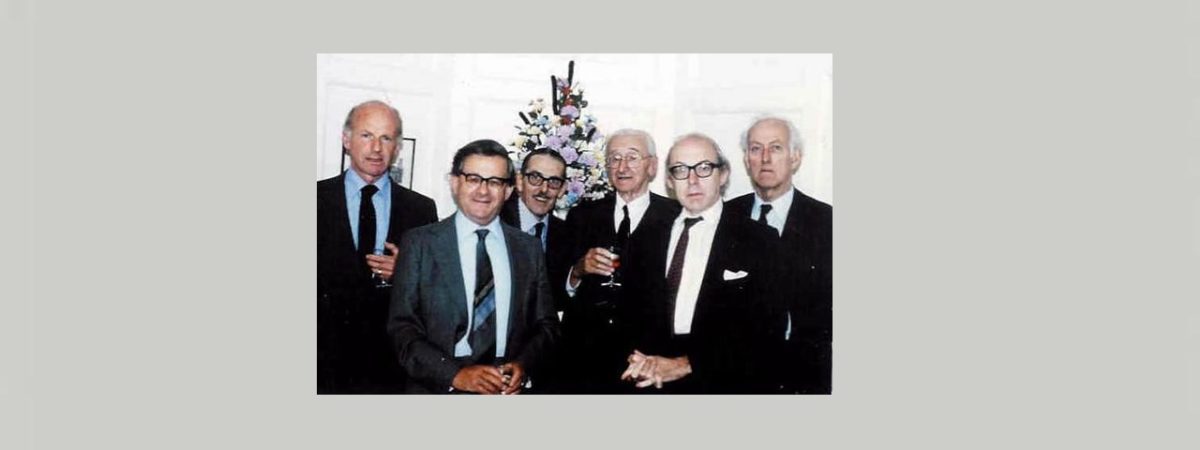The Portes-Snowdon bet: will relative child poverty really rise above 37%?
SUGGESTED



Last week, the Equality and Human Rights Commission published an analysis, by Howard Reed and me, of the impact of changes to tax and benefits on household living standards over the entire period 2010 to 2021-22. I summarised the key results in the Guardian. We show that these changes are highly regressive: the direct impact is to reduce the net incomes of the poorest fifth of households by about a tenth, on average, while making little or no difference to the incomes of the richest fifth.
We also expect that the impact will be a large rise in child poverty; in particular, we are projecting that as a result of the changes to taxes and benefits, the proportion of children in Great Britain living in households with less than 60% of median income (after housing costs) will rise from just over 30% to about 41% in 2021-22 (Table 1 of the Executive Summary of our report. We could have used other definitions of child poverty – the numbers would be different but the results would be qualitatively similar).
This prediction – which is indeed dramatic – caught the eye of Christopher Snowdon of the Institute for Economic Affairs. Chris’s view is that we are being far too pessimistic; in particular, he notes that predictions made in the early years of the Coalition government by the IFS and others of a sharp rise in child poverty have yet to materialise, partly because of rising employment rates and partly because real wage growth, and hence median income growth, has been very slow. He also notes, correctly, that the rise we are predicting would be historically unprecedented.
Now economists in general have come in for a lot of flak recently for getting forecasts wrong. Much of this is in my view unfair or misconceived. Nevertheless, I strongly believe that those of us who claim to be experts, and make predictions based on our expertise, should be prepared to stand by those predictions; we should put our money where our mouths are.
So I offered Chris a bet, which he has accepted, that relative child poverty (on the definition we model) will rise above 37%. This takes into account (in crude terms) the fact that our forecast has a fairly large margin of error: I don’t expect it to be precisely right. In particular, as Chris rightly highlights below, all sorts of other things will happen to the economy, real wages, rents, etc. Our model is not a macroeconomic one, and is not designed to forecast those variables, which will impact the results.
In order to be meaningful, the bet has to be large enough for us to care who wins (ie, it can’t just be a token amount), so it’s for £1,000. This isn’t the first time I’ve done this: my previous bet with Andrew Lilico (also for £1,000) was on the level of inflation in 2015: he thought inflation would rise sharply; I disagreed. I won (unfortunately, Andrew says he’s not allowed to make any further bets with me, although I keep on offering, since Andrew’s predictions on the Brexit process frequently venture into the realms of fantasy).
However, the bet with Andrew was rather easier to define, since we were simply making competing predictions of inflation (“unconditional forecast”). But the forecast Howard and I are making is conditional; it’s explicitly based on the government implementing the changes to taxes and benefits that have been legislated for or are clearly stated to be government policy. If those changes aren’t implemented, the forecast isn’t valid any more, and we shouldn’t be held to it.
This raises a slight difficulty in making the bet – of course there will be further changes in one direction or another, but will they be large enough to mean that we should be no longer held to the forecast and hence the bet should be invalidated? How big a U-turn – for example on the four-year freeze to most working-age benefits, which has a very large impact in our projections – would be required? In order to deal with this, we’ve appointed an independent arbiter – Chris Giles of the Financial Times, who will if necessary rule on this question in due course.
The final result won’t be in until March 2023 (when the Households Below Average Income statistics for 2021-22) are published. But the first indications will come on Thursday, when the statistics for 2016-17 – the first year of the benefit freeze – are published.
Christopher Snowdon:
I am not betting against Jonathan because his child poverty forecast is the worst prediction ever made, only that it is the latest. I am getting tired of them. We have had eight years of gloomy predictions about rising poverty and spiralling inequality from the ‘independent’ (from whom?) Institute of Fiscal Studies and the relentlessly Eeyorish Resolution Foundation. These predictions invariably receive more media coverage than the real figures do when they are eventually published.
By the time Office for National Statistics’ data exposes these predictions as being wildly off base, people have moved on. No one seems to notice, no one takes the blame and new predictions from the same organisations are given the same credulous reception. As a result, millions of people – perhaps the majority – genuinely believe that the poor have got poorer, inequality has risen, and every measure of poverty has gone up in the age of ‘austerity’.
New figures are published on Thursday but, as of 2015/16, the rate of child poverty is slightly lower than it was before the 2008 crash. This is true in absolute terms, in relative terms and regardless of whether you measure it before or after housing costs. It also happens to be a fact that the incomes of the bottom quintile have risen more than those of richer groups, and income inequality is lower than it was ten years ago. None of this had made the front pages.
The thousand pound question is: will it be different this time? It is true that when measured in relative terms, child poverty has risen since hitting a low in 2012/13 and I am less comfortable betting on relative poverty than on incomes or ‘absolute’ poverty (the latter is actually a relative measure that uses 2010/11 as the benchmark). I am generally optimistic about people’s incomes, but with relative poverty it is not clear what optimism implies. Relative poverty tends to fall when the economy is doing badly and rise when it is doing well.
If I thought that the economy was going to be stellar in the next few years while benefits are frozen, I would not take the bet. But I suspect that GDP and wages will, at best, trundle gradually upwards. I don’t share the IFS’s belief that average wages will not return to pre-crash levels until 2022, but it will take at least a year or two.
It is, I think, probable that the next five years will see at least two of the following three: an unspectacular rise in median earnings, fairly low inflation, and rising incomes for those in the bottom deciles who are employed. The government also intends to raise the minimum wage so that it equates to 60 per cent of median earnings, meaning that nobody on the minimum wage full-time will be in relative poverty, and the income tax threshold is due to rise further. This all works in my favour, but it is not the main reason I accepted the bet.
The main reasons are threefold. Firstly, Jonathan was prepared to wager, which is more than can be said for those who make obesity predictions. More academics and pundits should put skin in the game. Incidentally, if any of the people who believe the NHS is going to be privatised want to put money on it, you know where to find me.
Secondly, while I accept that freezing benefits is likely to lead to a rise in relative poverty, the rate being predicted is extremely high. In the last 25 years, it has always been between 27 and 34 per cent. 41.3 per cent by 2021/22 would be one hell of a jump and even the lower rate of 37 per cent that is the basis of our bet would, as Jonathan says above, be unprecedented. That doesn’t make it impossible, but an extraordinary outcome requires extraordinary policies. I’m not convinced that May’s benefit reforms fit the bill.
Thirdly, every previous forecast I can recall has been wrong – and wrong in the same direction. They have all overestimated the rate of future poverty, inequality and, in the case of Danny Blanchflower, unemployment. It would be Sod’s Law if a prediction finally came true when I have money against it, but I don’t think the earlier predictions were wrong because of a run of bad luck. I think they suffered from the same systemic flaw. Leaving aside the possibility that they they are deliberately biased upwards to draw public attention to policies of which the authors disapprove, they tend to be based on what people’s income would be if they did not respond to economic incentives. But people change their behaviour to maximise financial returns. One reason why incomes have risen so much in the bottom fifth since the crash is that people have moved into the labour market – or, if already in the labour market, have worked more hours. We now have the lowest unemployment rate in forty years, but it could go lower.
I haven’t read Jonathan’s report and I claim no expertise. I am just some chump who distrusts gloomy economic forecasts. Do bear that in mind if I win the bet. But I have to say that this is probably all academic. The most likely outcome of this bet is that it is invalidated by a change in policy. The Tories have developed a peculiar habit of shouting loudly about big, unpopular spending cuts and then whispering quietly when they deliver the inevitable U-turn, thereby ensuring the worst possible publicity for the least possible benefit to the public finances. I expect these reforms to be watered down or ended prematurely for political reasons, so we will probably never know if Jonathan’s model was right.
This article was first published on the Not the Treasury view blogspot.
- ‘A new understanding of poverty. Poverty measurement and policy implications‘ by Kristian Niemietz
- ‘Redefining the poverty debate. Why a war on markets is no substitute for a war on poverty‘ by Kristian Niemietz




